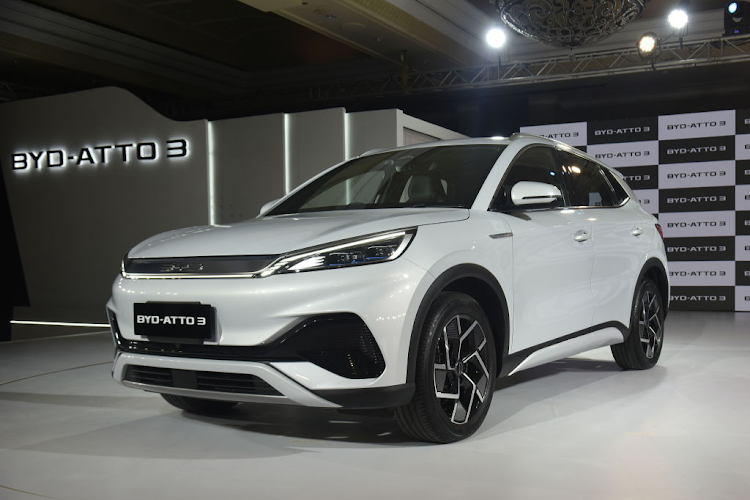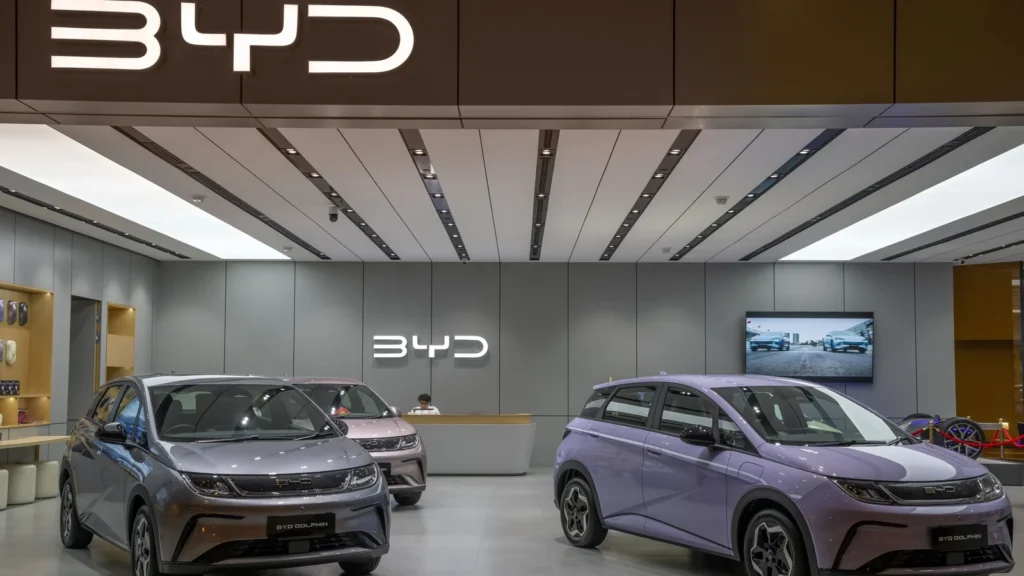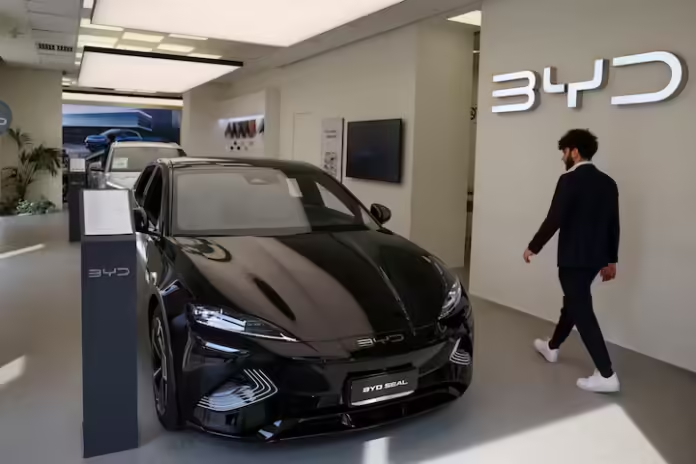With BYD closing the gap on Tesla with an astounding 21% growth in second-quarter sales, the electric vehicle (EV) industry in China is undergoing a dramatic change. With BYD gaining footing quickly and threatening Tesla’s supremacy, this shift suggests a possible reworking of the EV environment. It is critical for both customers and industry observers to comprehend the tactics and prevailing market conditions that have contributed to the current change in the EV market.

A Closer Look at Tesla’s Sales Decline
Even though Tesla leads the world in EV sales, the company had a difficult second quarter in China. June saw a dip in the company’s China-made EV sales for the third straight month, falling to 71,007 units, a 24.2% year-over-year loss. Deliveries from Tesla fell 4.8% overall, which is the first time the American company has experienced a dip in two consecutive quarters. These decreases coincide with fierce competition in China and sluggish demand brought on by a dearth of reasonably priced new models.
Ascent of BYD: An Outstanding Q2 Outcome
A significant 21% increase in EV sales was reported by top Chinese carmaker BYD during the second quarter of 2024. Reuters calculated that the business sold 426,039 electric vehicles based on monthly sales figures. With 443,956 cars delivered in the same time frame, Tesla was already behind the competition thanks to its outstanding achievement. The 18,000 car differential is far less than the nearly 86,000 disparity from the previous quarter, underscoring BYD’s competitive advantage and quick growth.
Also Read :- Lexus LFR V8 Supercar Set to Rival Aston Martin Vantage
Price Drops and Incentives: Tesla’s Decline-Prevention Strategy
Tesla responded to these difficulties by lowering prices and offering incentives to increase sales. With the use of this tactic, Tesla was able to outperform the market and saw a 5% increase in share price during morning trading. Long-term success for the business, meanwhile, will hinge on its capacity for innovation and the launch of fresh models that appeal to customers.
Why is BYD’s growth staying consistent?
Several important elements are responsible for BYD’s consistent progress in the EV market:
- Consumer Shift to EVs and Hybrids: In China, there is an increasing trend of people buying electric and hybrid cars instead of gasoline-powered ones. Growing public awareness of environmental issues and pro-environment laws are the main forces behind this change.
- Competitive Pricing: BYD has demonstrated success in providing vehicles at a pricing point that is affordable for a wide variety of customers. Their intelligent pricing and intensive marketing have opened up the market to their EVs.
- Creative Models: BYD keeps coming out with new models that are tailored to different customer tastes. They’ve been able to increase their market share thanks to this strategy.
Chinese EV Manufacturers’ Role: Nio and Others
Not other Chinese automakers are as prominent in the EV industry as BYD. Vehicle deliveries more than doubled to 57,300 units in the second quarter, according to Nio, another significant competitor. The prosperity of these businesses is indicative of a larger pattern in China’s automotive sector, where new energy cars—such as plug-in hybrids and electric vehicles—are becoming increasingly popular.
The China Passenger Car Association (CPCA) reports that new energy vehicle sales in May reached a new monthly high, accounting for 46.7% of all car sales. Numerous causes, including as price reductions and growing customer desire for ecologically friendly solutions, are contributing to this spike in demand.
Interest rates and economic factors in market dynamics
The EV landscape is being influenced by market variables other than the rivalry between BYD and Tesla. Car sales are significantly impacted by high borrowing rates. The average annual percentage rate (APR) for new cars increased from 7.1% in the first quarter of 2024 to 7.3% in the second. Financing the purchase of a new car is becoming more expensive for customers due to longer loan terms and smaller down payments. Budgets for consumers are also being further stretched by growing auto insurance premiums.

Conclusion
The EV industry is changing, with BYD’s ascent upending Tesla’s established hegemony. With BYD expanding and new rivals appearing, Tesla must quickly adjust to a dynamic environment. In the upcoming months and years, consumers and industry observers will be closely observing how these dynamics unfold. Although the industry is competitive, as seen by Tesla’s recent difficulties, the company’s inventiveness and worldwide presence offer a solid platform for future expansion.
Disclaimer: The information provided in this article is based on publicly available sources and may not be 100% accurate.

